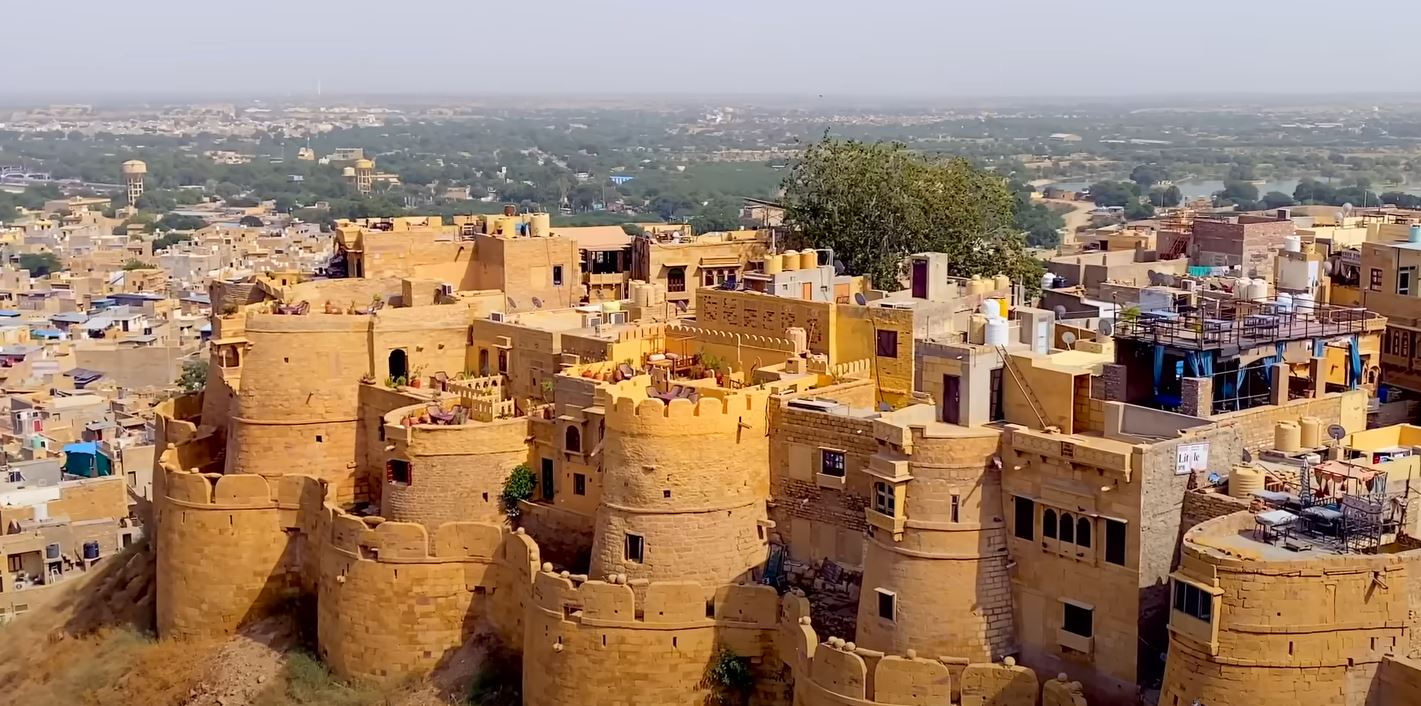Jaisalmer, often hailed as the "Golden City of India," stands like a mirage on the edge of the Thar Desert, where every alley and stone speaks of regal pasts and cultural confluence. For heritage travelers seeking authenticity, Jaisalmer offers a living museum of architecture, tradition, and desert life that remains largely untouched by rapid modernization. From intricately carved havelis to age-old temples, Jaisalmer presents a compelling narrative woven into sandstone.
A Living Fort: Jaisalmer Fort’s Historical and Cultural Significance
Dominating the skyline is the Jaisalmer Fort—one of the few “living forts” in the world. Built in 1156 AD by Rawal Jaisal, this UNESCO World Heritage Site is not only a marvel of Rajput military architecture but also home to thousands of residents. Its yellow sandstone façade glows honey-gold at sunrise and sunset, a sight that enchants every visitor.
The fort’s narrow lanes are lined with palaces, Jain temples, and residential complexes. As one walks through, the blend of Rajput and Jain architectural elements becomes evident. The Jain temples inside the fort, dating back to the 12th century, showcase intricate marble work and ancient manuscripts that reflect spiritual devotion and artistic brilliance.
Architectural Brilliance Beyond the Fort: The Havelis of Jaisalmer
Jaisalmer’s rich merchant history is best reflected in its iconic havelis—lavish mansions that boast ornate facades and filigree work. Patwon Ki Haveli, a cluster of five havelis, is a striking example of craftsmanship where every balcony and jharokha narrates tales of affluence and aesthetic finesse. Similarly, Nathmal Ki Haveli and Salim Singh Ki Haveli reveal the wealth and taste of the city’s historical trading elite.
These havelis are not mere tourist sites but architectural documents that help trace the socio-economic history of Rajasthan. For heritage enthusiasts, observing the stone latticework and frescoes becomes an immersive exercise in understanding 18th- and 19th-century design sensibilities.
Temples That Stand the Test of Time
Jaisalmer is also home to a number of Hindu and Jain temples that offer more than religious value. The Jain temples within the fort complex feature Dilwara-style carving and house centuries-old scriptures and statues. The Chandraprabhu and Rishabhdev temples are particularly significant for their detailed sculptural work and spiritual ambiance.
Outside the fort, the Tanot Mata Temple near the Indo-Pak border holds not just religious reverence but historical significance too, having withstood Pakistani shelling during the 1965 and 1971 wars. For those interested in military and religious intersections, this temple offers a unique narrative.
The Desert as a Cultural Landscape
Beyond monuments, the desert itself plays a central role in Jaisalmer’s heritage. It is not just a physical space but a cultural one where nomadic traditions, folklore, and artisanal crafts converge. The Sam Sand Dunes and Khuri offer insight into desert ecology and the life of the Bhil and Bishnoi communities.
Travelers can experience the desert’s cultural vibrancy through traditional folk music and dance performances held under the stars. These aren’t staged events but deeply rooted expressions of local identity. For a structured experience, visitors often opt for curated Jaisalmer 2 days trips that balance heritage exploration with cultural immersion.
Museums and War Memorials That Chronicle Time
The Jaisalmer War Museum and Desert Culture Centre serve as repositories of the region’s martial and cultural histories. Exhibits range from wartime artifacts to puppet collections, offering travelers context for the city’s historical evolution.
The Longewala War Memorial, located about 100 km from Jaisalmer, provides a compelling look at India's military past, particularly the 1971 India-Pakistan war. It’s a stark but necessary stop for travelers interested in modern history intersecting with geography and geopolitics.
Local Crafts and Artisanal Traditions
Jaisalmer’s craftsmanship is as much a part of its heritage as its forts and temples. From mirror embroidery and stone carving to leatherwork and block printing, the city sustains artisanal skills passed down through generations. Visiting local workshops offers travelers the chance to witness the techniques firsthand and understand their cultural value.
Markets like Sadar Bazaar and Bhatia Bazaar not only sell souvenirs but also preserve the trading culture that once made Jaisalmer a key stop on ancient caravan routes. These local crafts tell a parallel story of Jaisalmer’s economy, identity, and design history.
The Role of Transport in Exploring Jaisalmer’s Heritage
To access these dispersed yet significant sites, a reliable mode of local transport is essential. Opting for a trusted Taxi Service in Jaisalmer ensures ease of travel while offering flexibility to explore sites at your own pace. Whether it's a sunrise at Gadisar Lake or a remote village temple, convenient transportation enables deeper exploration.
For those seeking curated cultural routes, a Jaisalmer Sightseeing Taxi service can provide a structured itinerary covering all major monuments, temples, and cultural sites with the added benefit of local driver expertise.
A Final Word for Heritage Enthusiasts
Jaisalmer is not merely a destination—it is a chronicle in stone, sand, and spirit. For heritage travelers, the city offers a rare confluence of military history, sacred art, vernacular architecture, and desert ecology. It challenges the visitor to look beyond aesthetics and dive into the stories that built this golden citadel over centuries. A journey to Jaisalmer is not just about sightseeing—it is about time-traveling through India’s layered cultural heritage.
